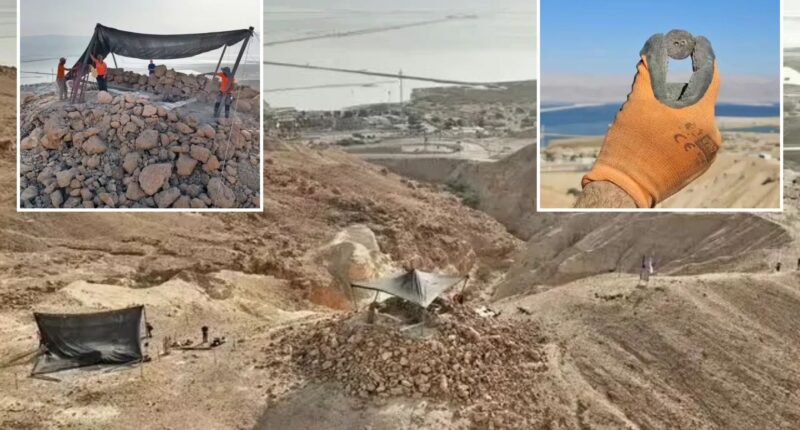A HIDDEN pyramid buried for 2,200 years has been unearthed alongside hoards of treasure.
Archaeologists made the shocking discovery while attempting to document and preserve sites once threatened by looting and illegal excavations.



The Israel Antiquities Authority (IAA) team had been working around the vast Nahal Zohar.
It lies in the Judean Desert in Israel and the West Bank and stretches from the Judean Mountains to the Dead Sea.
Some of the freshly unearthed artefacts include scrolls, weapons, leather objects, wooden utensils and coin hordes.
However, the discovery of a large pyramid-shaped complex built with hand-carved stones, each weighing hundreds of pounds took centre stage.
The pyramid was believed to date back to the First Temple period, around 1,000 BC to 586 BC.
But it’s more likely to have operated 2,200 years ago.
Not far from there, archaeologists found ancient papyrus scrolls written in Greek and coins that were minted when the Ptolemies and Antiochus IV were in power.
This indicates the building dates to the Hellenistic period.
With the support of the Ministry of Heritage, the team has employed modern rappelling gear, high-tech tools, and innovative recording techniques to uncover these findings.
Researchers don’t currently know the structures purpose, but believe it may have served as a tomb or watchtower to safeguard important trade routes.
Eli Escusido, the Director of the Israel Antiquities Authority (IAA), stated: “Exploring the Judean Desert through archaeological digs is a crucial endeavor in the annals of Israel.
“The discoveries are exciting and of great value for historical and archaeological research.”
Meanwhile, Hertiage Minister Amihai Eliyahu praised the discovery.
They said: “This is yet another testament to the historical and cultural wealth buried in our land’s soil.
“The pyramid structure and rare finds illuminate an important chapter in the history of the land of Israel and strengthen our deep connection to our heritage.
“I’m proud of the dedicated work by the Israel Antiquities Authority staff, who, alongside hundreds of enthusiastic volunteers, are saving these treasures from antiquity looters.
“The Judean Desert survey project is an excellent example of how the State of Israel preserves its cultural assets for future generations.

It comes after archaeologists found an underwater 2,000-year-old temple of an ancient civilisation that was mysteriously lost at sea.
The site had been dedicated to Dushra, a supreme god of the Nabataen civilisation, dating back to the fourth century B.C.
However, destructive volcanic activity submerged parts of the island and altered the coastline, making it unusable.
Until 2023, researchers stumbled across the temple while mapping the seafloor of the coast of Pozzuoli.
Michele Stefanile, an author of the study said, “For me this was one of the most unexpected discoveries.”

















